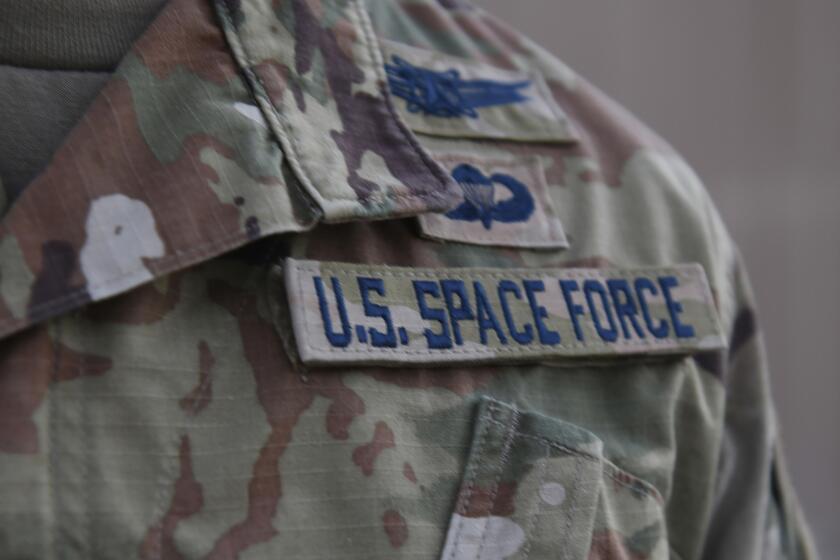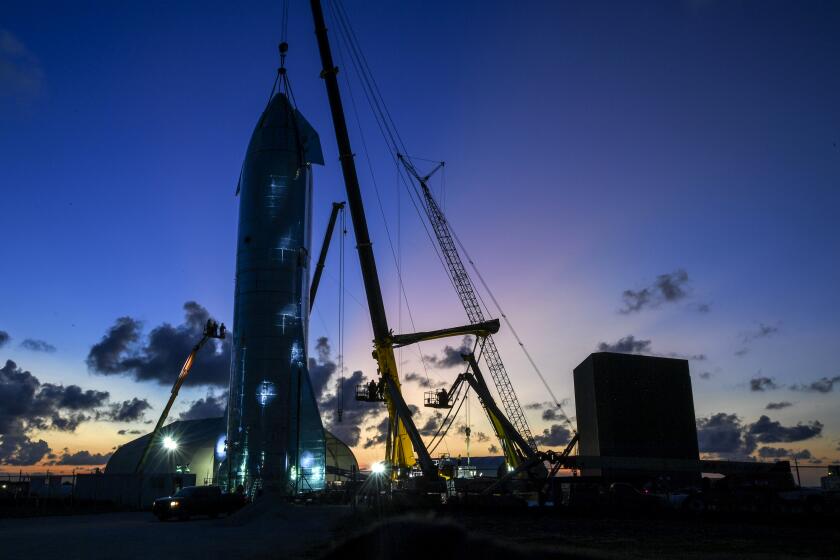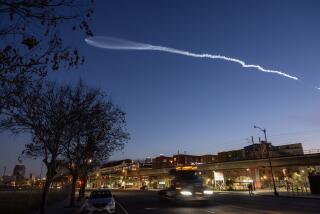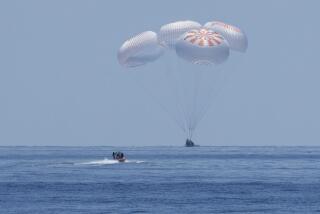Space Force acquisitions and launch division will be based in L.A. area

One of the U.S. Space Force’s three main prongs, the division that will develop and buy space technologies and services, will be based in the Los Angeles area, officials announced Thursday.
The Los Angeles Air Force Base’s Space and Missile Systems Center in El Segundo will become the headquarters of the planned division, which is named Space Systems Command. The division is set to become official this summer after its commander is selected and receives Senate confirmation.
Space Systems Command will be in charge of developing and acquiring space capabilities, including launch services and developmental testing. It will also oversee the Space Force’s science and technology activities.
The Space and Missile Systems Center has gone through a number of reorganizations since it began in 1954, but “this is clearly the most significant reorganization to date,” Lt. Gen. John F. Thompson, the center’s commander, told reporters Thursday. He also described the center’s location, in what has been a seat of the nation’s aerospace industry for generations, as a “very unique space acquisition ecosystem.”
“A huge part of our nation’s space industrial base, our innovation, our capability to field the systems that we do, is right here in the L.A. area,” he said. “There are great hot spots for space acquisition and other, many ecosystems around the United States of America ... but right here in the L.A. basin is a large majority of all the folks we work with on a day-in, day-out basis.”
President Trump championed the creation of the Space Force, but he has done little to ensure it has the funding, staffing and authority to succeed.
Southern California’s once-booming aerospace industry has ebbed in recent decades, with employment falling sharply since the late 1980s.
Still, the L.A. Air Force Base is surrounded by aerospace industry stalwarts. Northrop Grumman’s Space Park campus is blocks away, while a Raytheon Technologies facility and Boeing Satellite Systems are just around the corner. SpaceX — which is one of two companies under contract to launch U.S. military satellites — is five miles away in Hawthorne. The base is even connected by a bridge to Aerospace Corp., a federally funded research and development center focused on space that has long worked with the Space and Missile Systems Center.
“I think it’s really good for the economy,” Aerospace Corp. Chief Executive Steven J. Isakowitz said of the Space Systems Command decision. “I think it’s really good for encouraging careers in space and high tech.”
Raytheon, Northrop Grumman and Boeing each said they look forward to working with Space Systems Command.
Thursday’s announcement was also cheered by California politicians, including Rep. Ted Lieu (D-Torrance), who said the move would position the region for further growth.
“Southern California was already leading the way on aerospace and space innovation,” he said in a statement. “We are ushering in a new era focused on space and I’m thrilled Southern California and LA AFB [L.A. Air Force Base] will be at the forefront.”
Gov. Gavin Newsom called the news “a critical investment in California’s vital aerospace and defense industries” and a “big win” for the state’s economy.
Thompson said that once other organizations are moved under the umbrella of the Space Systems Command, the division will have as many as 11,000 total personnel.
The proposed city of Starbase, Texas, would fit into a long tradition of communities dominated by a single employer
One of the Space Force’s two other planned divisions is already established. Space Operations Command, which was created in October and is based at Peterson Air Force Base in Colorado, is in charge of military space assets such as satellites. The other, Space Training and Readiness Command, is set to be established this year and will focus on training Space Force personnel.
Created in 2019 as the first new U.S. armed service since 1947, the Space Force was established with the mission of protecting U.S. interests in space — operations that had been spread throughout the nation’s other military branches. Some of those operations have already transitioned to the Space Force, which has also been gaining personnel and funding.
More to Read
Inside the business of entertainment
The Wide Shot brings you news, analysis and insights on everything from streaming wars to production — and what it all means for the future.
You may occasionally receive promotional content from the Los Angeles Times.













